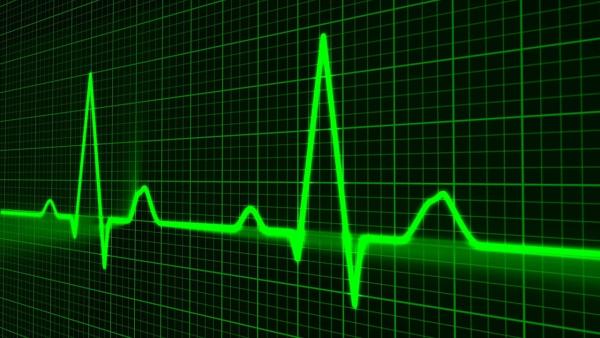“A complex system is made up of very large numbers of interacting components, asymmetrically organized. Some such systems operate somewhere between order and disorder—“on the edge of chaos,” …. The system can operate for an extended period very nicely, apparently in equilibrium but in fact adapting all the time.”
– Doom Niall Ferguson
We humans are, of course, biologically complex systems. The apparent equilibrium in our heart rates, that 60 or more beats a minute, belies the fact that the heart’s contractions adapt dynamically. That dynamism is measured by heart rate variability (HRV), the difference in time between beats that pulse, the average beats/minute, disguises. HRV is controlled primarily by our autonomic (unconscious) nervous system, which in turn is controlled by so many less specific variables, including medications, stress, and cardiovascular disease. If we are to unfold those variables further, some medications slow the heart, e.g., beta-blockers, while others increase heart rate, e.g., decongestants and asthma medications. Stress acting through our fight-flight pathways increases HRV, and meditation slows HRV. Cardiovascular disease may influence HRV by injuring the final neural pathways to heart conduction, e.g., atrial fibrillation, or impair the heart's pumping function, necessitating increased heart rates to perform the same exertion. As Dr. Lundberg points out, HRV is a non-specific measurement, like C-reactive protein or CRP, a non-specific measure of inflammation.
“Normal values (reference ranges) for HRV begin at an average of 100 msec in the first decade of life and decline by approximately 10 msec per decade lived. At age 30-40, the average is 70 msec; age 60-70, it's 40 msec; and at age 90-100, it's 10 msec.”
As we age, our HRV dampens, with smaller, more consistent time intervals between our heart’s contractions. In a sense, our adaptive response becomes more rigid. There are other ways we might apply the lens of heart rate variability, especially for inflammation. As with everything autonomic, the vagus nerve is front and center. The vagus nerve is a primary driver of our heart rate, and stimulation of the vagus will result in diminished cytokine release, one of the effectors of inflammation.
In a study of 28 patients with Type II diabetes, all given seasonal flu vaccinations, there was a transient rise in CRP, the marker for inflammation, and a simultaneous decline in HRV. It would seem that the same vagal response to enhanced inflammation may also reduce HRV. In a more recent study, for the COVID curious, a similar finding was made in 70 healthy volunteers receiving the Pfizer vaccine. The reductions in HRV were most significant on day 2 post-vaccination and had returned to baseline by day 10. And before we reopen the anti-vaccination argument, individuals with COVID demonstrate diminished HRV too.
I would like to complete the quotation from Niall Ferguson found at the beginning of this article.
“However, there can come a moment when the system reaches a critical state. A very small catalyst (the butterfly that flaps its wings or the famous last grain of sand that causes the entire pile to collapse) can trigger a “phase transition” from one state or equilibrium to another.”
It is an intriguing constellation of events associated with COVID, enhanced platelet function, a more “primed” immune system, and a slight loss in heart rate variability. Could those alterations, by themselves, “silent adaptations,” enough to trigger a phase transition from mild to severe COVID? Our need for simple, clear explanations prompts a desire for a “smoking gun” when it comes to any bad outcome. Biological systems are complex interactions, and minor changes of little consequence on their own may combine to deliver a bad outcome – no single smoking gun is required. By the way, that holds equally true for human behavior, although the little voice inside us is vehement that this is not the case.
Source: Heart Rate Variability: Are We Ignoring a Harbinger of Health? Medscape




